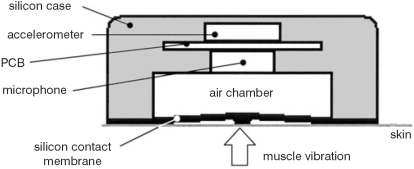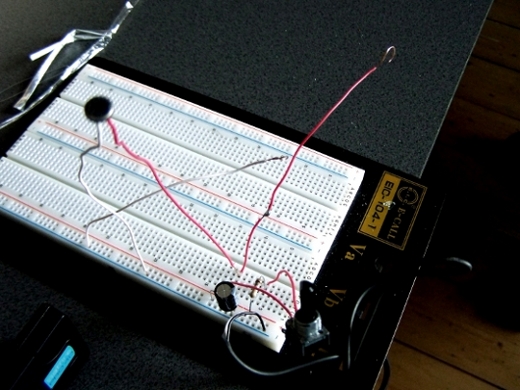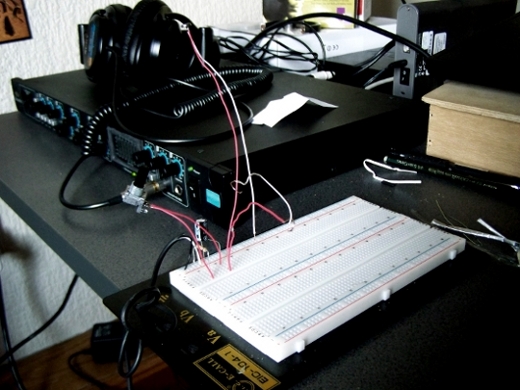Basis for a muscle sound sensor device
As mentioned in a previous post, I’ve been learning about the use of mechanical myography (MMG) in prosthetics and Biomedial Engineering generic applications in order to understand how to efficiently capture muscle sounds in real time and use them in a musical performance.
I’ve been studying the work of Jorge Silva at Prism Lab and I had initially planned to implement the same design of bio-sensing device he created and publicly published.
Here’s a schematic diagram of the sensor:
Muscle sonic resonance is transmitted to the skin which in turn vibrates exciting an air chamber. These vibrations are then captured by a condenser microphone adequately shielded from noise and interferences by a mean of a silicon case. Microphone is coupled with an accelerometer which is used to filter out vibrations caused by a global motion of the arm, so that muscle signals can be properly isolated.
Such design has been proved effectively functional through several tests and academic reports, however I soon realized its development would take a fairly good amount of time and, above all, it would require some peculiar skills which are not part of my current background. Thus I ordered all the components I needed, but then decided to implement a simpler version of the sensor to get more easily familiar with the technology. Once I’ll know how to master muscle sounds and what I can obtain from them, I believe I could imagine a more complex sensor or implement the one above (if I’d really need to).
Thanks to the awesome folks at Dorkbot ALBA (a special thanks to Tom H and Martin and the Edinburgh Hacklab) I could build a first rough circuit and embedded MMG sensor. Below photos of the circuit and my studio setup including a Focusrite Saffire Pro40 external sound card which I use to convert and amplify the signal.
The flat round object appearing out of focus in the first pic is the electret condenser microphone, actually the same used by Silva in his cmasp design, and it’s the core of the device. Microphone sensitivity ranges from 20Hz up to 16kHz thus it is capable to capture the low resonance frequency of muscles (between 5Hz and 40/45Hz). It is important to note, though, that the biggest part of muscles sounds spectra seems to sit below 20Hz, i.e. muscles produce infrasounds which a human ear cannot perceive but a human body can physically experience. This issue really interests me and it could possibly affect my research, but for now I won’t elaborate on it.
Now that I have a first sensor prototype I’m ready to plug my body and listen!




